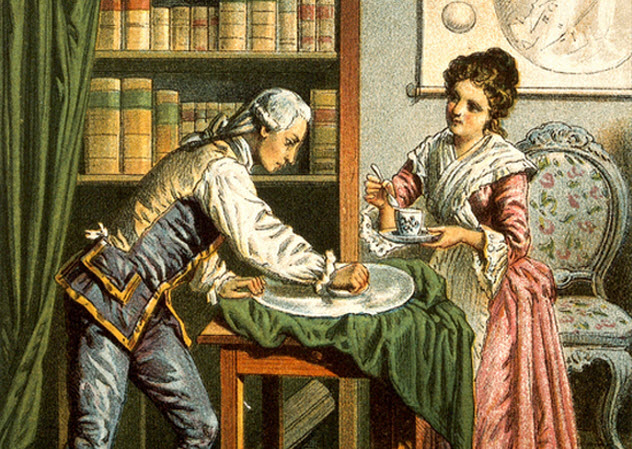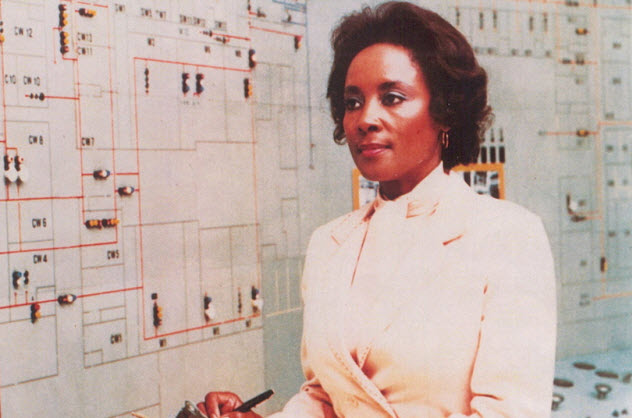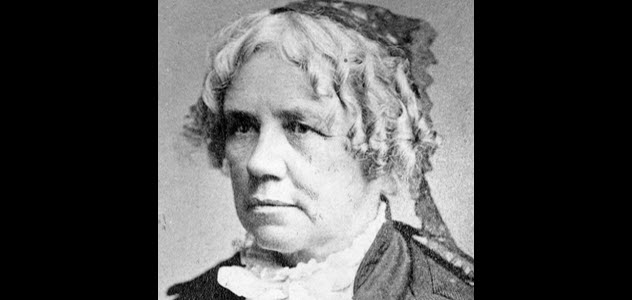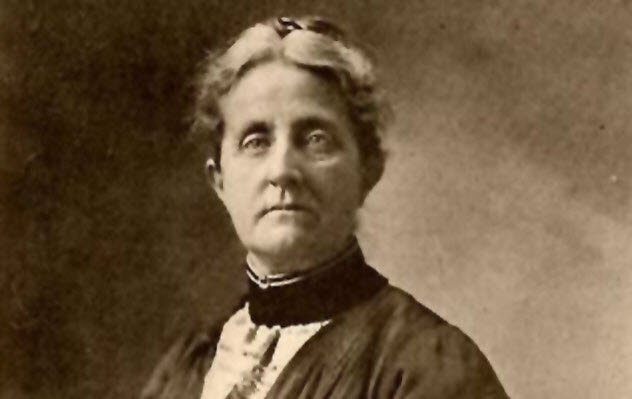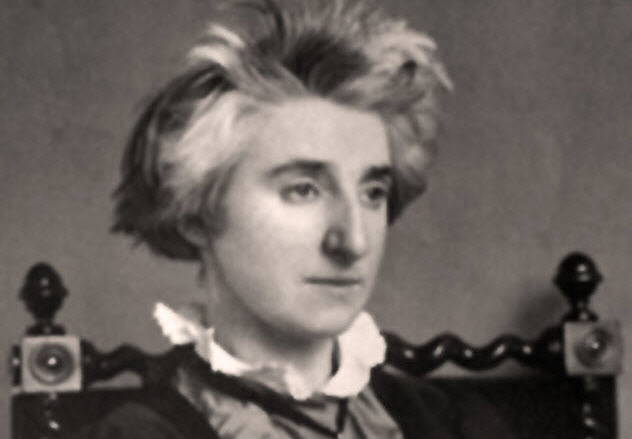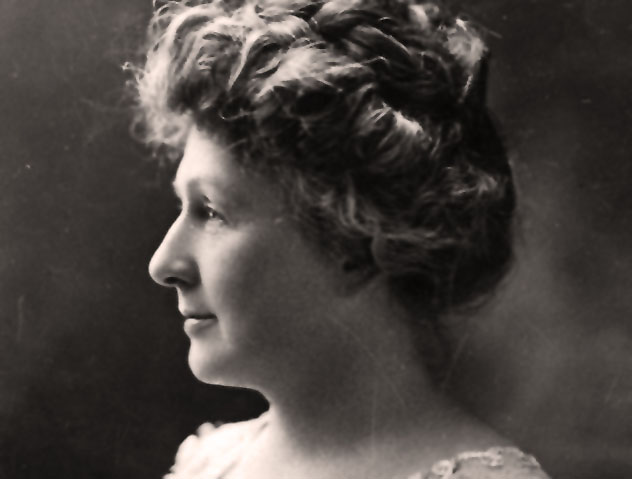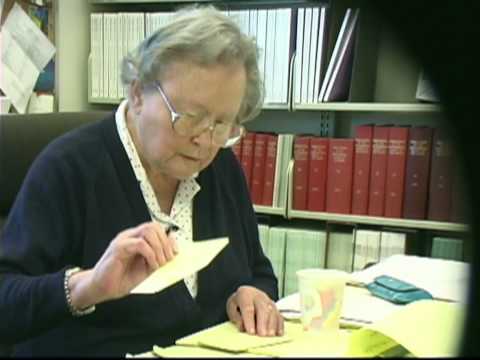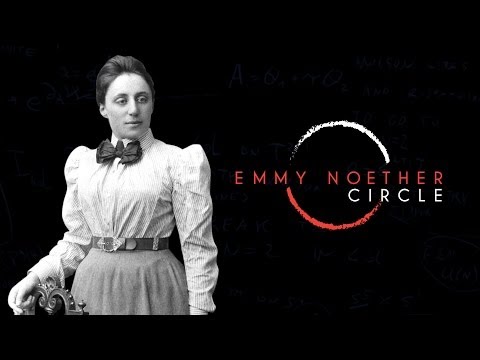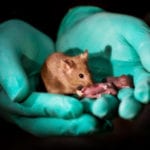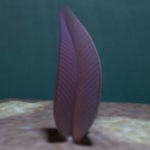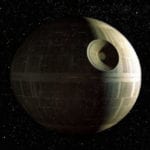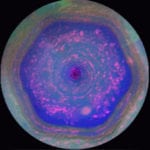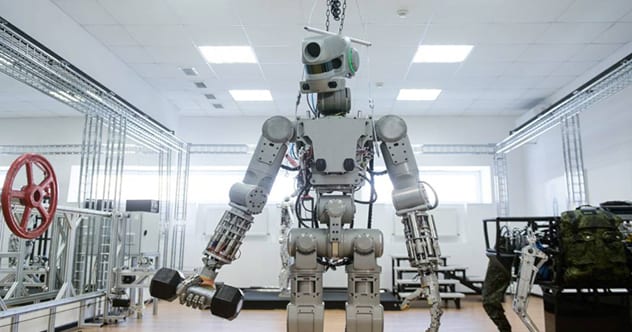Although there are other men who didn’t get the recognition they deserved, we’re going to concentrate today on the largely unknown women of space. They not only had to battle the politics of science, they had to fight to be there in the first place. Despite the obstacles, these 10 women made significant contributions to our understanding of space and deserve to be more widely known.
10 Katherine Johnsonb. 1918
Born in West Virginia in 1918, Katherine Johnson excelled in school, entering high school at age 10 and college at age 15. She graduated with BS degrees in math and French when she was 18. Then she became a teacher. In the 1950s, a relative told her that the National Advisory Committee for Aeronautics (NACA), the forerunner to NASA, wanted to hire African-American female “computers” for their Guidance and Navigation Department. Back then, pools of women performed calculations for NACA’s engineers. A year later, in 1953, Johnson got the job. Like the other women, she worked on the problems that were assigned by the engineers. Unlike the other women, she asked a lot of questions. She wanted to know the “whys” and “hows” of everything. Her inquisitive mind got her noticed. Johnson began to attend briefings with the men, which was incredibly bold at that time. Her expertise in geometry made her a leader when NACA began work on space. In 1962, President John F. Kennedy promised to put a man on the Moon. Johnson was an obvious choice to join the team to make that happen. She worked on calculating the trajectories for the space flights of Alan Shepherd in 1961, John Glenn in 1962, and the first Apollo Moon landing in 1969. After 33 years with NACA and NASA, Johnson retired in 1986. Even with all her achievements and prestigious awards, she still had one more mission: to encourage students to pursue careers in math and science. Some of them credit her talks with inspiring them to do just that. In 2011, the Katherine G. Johnson Science Technology Institute at Alpha Academy in Fayetteville, North Carolina, was dedicated in her honor. However, as inspiring as she is, few people know her name. With the push for more young people to enter careers in math and science, her story should be more widely known.
9 Caroline Herschel1750–1848
Dubbed the 18th-century “Cinderella of Science,” Caroline Herschel escaped the abusive house of her parents to eventually become a prominent force in astronomy. Born in Germany in 1750 to a father who encouraged her education but a mother who wanted to keep her as a lifelong servant, Caroline had a difficult childhood. When she was three years old, smallpox left her face scarred. Then, at age 10, typhus stunted her growth at 130 centimeters (4’3″) tall. Her parents felt that her physical appearance would stop her from making a good match in marriage, so they decided to keep her as a housemaid. When she was 22, her brother William rescued her, inviting her to live with him as his housekeeper in Bath, England. William was a professional musician whose hobby was astronomy. He taught Caroline math and music, turning her into a talented soprano who sang professionally. She also helped him with astronomy, including his building of powerful telescopes. Surprisingly, Caroline was able to make complex mathematical calculations of their observations even though she hadn’t learned her multiplication tables. Eventually, the brother-sister team turned to astronomy full time. Caroline discovered three nebulae (faint clouds) and eight comets, making her the first woman credited with discovering a comet. She also published important catalogs of stars and nebulae. William was no slouch, either. In 1781, he discovered Uranus. Caroline received many awards during her lifetime. She was also the first woman invited to join the Royal Astronomical Society.
8 Annie Easley1933–2011
Born into the segregated South in Alabama in 1933, African American Annie Easley learned the importance of a good education from her mother. “You can be anything you want to,” said her mother. “It doesn’t matter what you look like, what your size is, what your color is. You can be anything you want to, but you do have to work at it.” Although Easley initially majored in pharmacy, she had to change course when she relocated to Cleveland with her husband. There were no pharmacy programs there. When she read a local newspaper story in 1955 about sisters who worked as human computers for nearby NACA, she knew she’d found a match for her math skills. Two weeks later, she became one of the few African Americans on NACA’s staff. When NACA became NASA, her job was changed to math technician because her department now had real computers to perform calculations. While continuing to work at NACA full time, Easley enrolled full time at Cleveland State University to get a math degree. Although NACA paid for male employees to get undergraduate degrees, Easley was forced to pay for her own education. There was also an attempt to embarrass her. When a picture of the workers in her group was enlarged for display at an open house, her face was purposely cut out of the photo. “When people have their biases and prejudices, yes, I am aware,” she said. “But my thing is, if I can’t work with you, I will work around you. I was not about to be [so] discouraged that I’d walk away. That may be a solution for some people, but it’s not mine.” As the use of computers increased, Easley also learned to program. She was involved in analyzing alternative energy sources, like solar and wind, to determine the use and life of storage batteries. Those studies were used to develop batteries that are found in today’s hybrid vehicles. She also worked on software development for the powerful upper-stage rocket, Centaur, which has launched everything from weather satellites to the Cassini spacecraft for Saturn exploration.
7 Maria Mitchell1818–1889
Maria Mitchell is believed to be the first female astronomer in the US. “We especially need imagination in science,” she said. “It is not all mathematics, nor all logic, but is somewhat beauty and poetry.” Born into a Quaker family in Massachusetts in 1818, Mitchell received much of her early schooling in astronomy from her amateur astronomer father. As an adult, she and her father would view the sky from an observatory on top of a bank where he worked. In 1847, using a tiny 5-centimeter (2 in) telescope, she discovered a comet, the first telescopic one observed in the US. Called “Miss Mitchell’s Comet,” it brought her serious recognition from leaders in the field. The King of Denmark gave her a gold medal for finding it. She was also the first woman invited to join the American Academy of Arts and Sciences a year later. It took almost a century for another woman to achieve that recognition. Mitchell was ahead of her time in many ways. During the Civil War, she joined the antislavery movement, refusing to wear clothes made of cotton grown in the South by slaves. The war also changed the course of her career. In the eastern US, as some states began to open colleges for women, Michael Vassar recruited her to teach at Vassar College to enhance its reputation. With access now to one of the best telescopes in the US, Mitchell specialized in studying Saturn and Jupiter. She also brought some common sense to Vassar’s program by ignoring a rule that stopped her female students from going outside at night to see the stars. She believed in giving her students direct field experience, something even men’s colleges rarely did at that time. Mitchell was also a prominent voice in the fight for women’s rights, helping to form the American Association for the Advancement of Women, the forerunner of today’s American Association of University Women. She died of a brain disease in 1889. After her death, she was honored in many ways, including having a crater on the Moon named after her.
6 Mary Watson Whitney1847–1921
Mary Watson Whitney did more for the women who succeeded her in astronomy than she did for herself. Born in Massachusetts in 1847 to well-to-do parents who encouraged her education, Whitney showed an early aptitude for math. She was fortunate that Vassar opened a year after she graduated from high school. Otherwise, she would have been denied an advanced education in astronomy. Upon entering Vassar, Whitney bonded immediately with Maria Mitchell, who was the school’s professor of astronomy and director of its observatory. While getting her degree, Whitney had to deal with personal tragedies like the death of her father and the loss of her brother in a shipwreck. She was charged with taking care of her mother and three younger sisters. But she remained strong. As one of her classmates said, “From the first day of her college life she moved through her appointed orbit as serene and calm and as true to the line as the stars she loved so well.” After graduation, she returned to Massachusetts to take care of her family and teach school. Occasionally, she had the opportunity to study or work with other astronomers. But she couldn’t get a steady job in her field because she was a woman. Later, she would say, “I hope that when I get to heaven I shall not find the women playing second fiddle.” Eventually, she returned to Vassar for her master’s degree. As president of the school’s newly formed alumnae association, she worked hard to guide Vassar’s future and set up a scholarship fund. It’s a recurring theme in her story that she always looked out for others. In 1889, at Mitchell’s request, Whitney replaced Mitchell as the chairperson of Vassar’s astronomy department. Mitchell had neglected to publish much research, so Whitney filled the void with research projects and courses on asteroids, comets, double stars, variable stars, and the exact measurement of photographic plates. While building Vassar’s program into one of the best in the US, she also forged relationships with other schools and observatories to get astronomy jobs for her students. As one of them said, “In discovering such talents and in giving them preliminary training, Miss Whitney made a greater contribution to astronomy than she had any conception of.”
5 Maria Winckelmann Kirch1670–1720
Maria Winckelmann Kirch became an astronomer when you didn’t need a formal education to enter the field. Born in Germany in 1670, Maria was fortunate that her father, a Lutheran minister, believed that women should be educated. After he died, her uncle took responsibility for her schooling. Later, she continued her study of astronomy with Christopher Arnold, a local farmer who had taught himself about the skies. Through Arnold, Maria was introduced to Gottfried Kirch, a prominent astronomer at that time who was about 30 years older than Maria. They married in 1692. Together, they continued his work of producing almanacs and calendars for the Berlin Academy of Science. Based on their observations of the sky, Maria and Gottfried included information in these publications about eclipses, phases of the Moon, positions of the planets and Sun, and more. In 1702, Maria became the first woman to discover an unknown comet, but her husband took credit for it. Most people believe he did this to hide from the academy how much Maria was helping him, although he eventually told the truth in 1710. However, the comet wasn’t renamed to honor her. In the meantime, Maria had already published papers on the aurora borealis and the conjunction of the Sun, Venus, and Saturn. Despite her lack of formal recognition, the astronomers of her time did know of her work. Gottfried Leibniz, president of the academy, once wrote of her skills, “Her achievement is not in literature or rhetoric but in the most profound doctrine of astronomy . . . I do not believe that this woman easily finds her equal in the science in which she excels.” When her husband died in 1710, the academy refused to let a woman keep producing their calendars. So Maria was replaced by a new astronomer with little experience. Eventually, her astronomer son Christfried became Astronomer Royal at the academy. Maria and her two daughters worked with him for a while. But the academy quickly threw Maria out because she was so prominent at their functions. As a result, she eventually left astronomy. Maria was a well-known astronomer in her time. But without formal recognition for her contributions, she’s been relegated to a footnote in history.
4 Margaret Lindsay Huggins1848–1915
Working together from their home for about 30 years, Margaret Lindsay Huggins and her husband, William Huggins, gave us the basis for astrophysics, the study of the physical nature of celestial bodies. In their day, astronomers weren’t sure that the distant lights in the sky were stars like our Sun. Margaret and William were the first astronomers to show that starlight had the same colors as the light from our Sun. Analyzing visible light from stars and other celestial objects is called optical spectroscopy. It’s a way to determine a star’s composition, density, motion, and temperature. With their studies, Margaret and William determined that the same elements composed everything in the known universe. Born in 1848 in Ireland, Margaret Huggins got her love of astronomy from her grandfather. When she read about William Huggins’s work in celestial spectroscopy in 1873, she became interested in learning more. Eventually, the two astronomers met and married. They pioneered the use of dry photographic plates for astronomical spectroscopy. Dry plates allowed for longer exposure than wet plates (which might dry out), letting more light accumulate in the photographs of the stars. So we’d get better information and learn more about the nature of the universe. They analyzed the spectra of planets, stars, nebulae, and even radioactive substances. Their work with nebulae (faint clouds) eventually led to the 20th-century theory of the expanding universe. The couple won the Actonian Prize of the Royal Institution for science writing after publishing their research in An Atlas of Representative Stellar Spectra. William died in 1910, followed by Margaret in 1915.
3 Annie Jump Cannon1863–1941
Annie Jump Cannon didn’t come up with any great theories or compute trajectories to take astronauts into space. She did grunt work. But without her, we’d have no basis to understand the stars. Born in Delaware in 1863, she was fortunate to be the oldest daughter of Delaware state senator Wilson Cannon. That gave her resources and educational opportunities that most women didn’t have. Encouraged by her mother, Cannon studied astronomy and physics at Wellesley College and astronomy at Radcliffe College. In 1896, she joined a group called “Pickering’s Women” (or “Pickering’s Harem”) who worked for Edward Pickering, the director of Harvard College Observatory. Back then, most scientists thought the Milky Way was the only galaxy in the universe. Astronomers were detecting more points of light in the night sky with their newly built telescopes, but they didn’t understand what they were seeing. Analyzing the photographs of these stars (and their relationships to one another) was like trying to figure out the pattern in a jumble of numbers or trying to decode a scrambled message. Pickering became so frustrated by the lack of progress from the male astronomers at Harvard that he finally hired women to get the job done. And they did. Cannon was the one who stood out. She simplified the cataloging system for stars by classifying them according to temperature. From highest to lowest temperature, she used the letters O, B, A, F, G, K, and M to sort the stars. She also came up with a mnemonic device to remember the system: “Oh, Be A Fine Girl—Kiss Me!” OB stars are more blue, M stars are more red, G stars (like our Sun) are yellowish or whitish. It may seem like no big deal, but these classifications help astronomers to create theories of the universe that they couldn’t otherwise. For example, it directly impacted astronomer Edwin Hubble’s ability to realize that our universe is expanding. But while Pickering had craters on Mars and the Moon named after him, Cannon’s most important achievement was called the Harvard system of spectral classification. However, she did receive many awards, including her own Google doodle on December 11, 2014.
2 Margaret Burbidgeb. 1919
Margaret Burbidge made some excellent contributions to astronomy, but she also fought hard for women’s equality in the field. One of her notable achievements in that area was to turn down the Annie J. Cannon Award from the American Astronomical Society because they only awarded it to women. She believed it was just as discriminatory to exclude men as to exclude women from any area of astronomy. Born in England in 1919, Margaret Burbidge was encouraged by both parents to pursue science. She received her bachelor’s degree in 1939 and a PhD in astronomy from the University of London in 1943. A few years later, she married fellow astronomer Geoffrey Burbidge, with whom she worked extensively during her career. He was known as the theorist and she, the observer. They spent most of their careers in the US, with her eventually becoming a US citizen. Burbidge was often denied opportunities in her field because she was a woman. In 1962, she became an astronomy professor at the University of California, San Diego, remaining there for the rest of her career. In 1972, she took a brief leave of absence to become director of the Royal Greenwich Observatory, which had carried the honorary title of Astronomer Royal for 300 years. However, she endured more discrimination when they gave that title to a male astronomer instead. Burbidge made important contributions to our knowledge of quasars, the chemical composition of stars, the masses and rotations of galaxies, and more. She and her husband are the Bs for which the B2FH theory is named. B2FH explains how almost every element in the periodic table is produced through a nuclear reaction in a star. She received many awards over the years, even becoming the first female president of the American Astronomical Society. She also has a celestial body named after her, Minor Planet #5490 Burbidge.
1 Emmy Noether1882–1935
German mathematician Emmy Noether must have been extraordinary if Albert Einstein was impressed by her intellect. In a letter to the New York Times after her death, Einstein called her “the most significant creative mathematical genius thus far produced since the higher education of women began.” Yet, few people know her name or what she accomplished. Born to a family of prominent mathematicians in Germany in 1882, Noether was initially schooled in acceptable subjects for her gender such as languages and piano. But she soon switched her study to math at the University of Erlangen. She wasn’t allowed to formally enroll because she was a woman, so she audited enough classes to earn the equivalent of a bachelor’s degree. She got a graduate education at the University of Gottingen then returned to Erlangen for a doctorate in mathematics. For years, she worked at Erlangen without pay or a formal position. The same was true when some of her male colleagues invited her back to Gottingen, although they fought with the administration to have her treated equally. “I do not see that the sex of the candidate is an argument against her,” argued leading mathematician David Hilbert. “After all, we are a university, not a bathhouse.” Despite how she was treated, Noether was known for her quick laughter and her passion for math. In 1915, she proved Noether’s theorem, one of the most significant mathematical theorems in modern physics. It helps us to understand Einstein’s general theory of relativity. In simple terms, her work tells us that if you change something, other things stay the same. As astrophysicist Dave Goldberg said, “Symmetry is not just the reason why wheels work, but also why E = mc2, why atoms exist, and why the floor holds you up.” In other words, it’s a big deal, possibly as important as Einstein’s work. She should be remembered for it.

